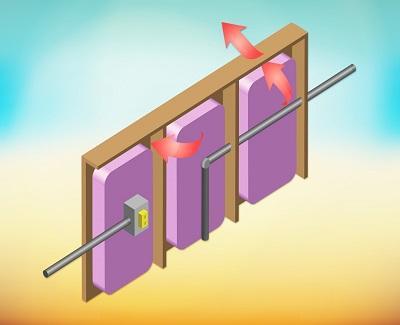Homeowners often hear the terms R-value and U-value thrown around. Do you know what these terms mean and how they impact your life? Take R-value, for instance. Defined as the measure of a material’s resistance to conductive heat transfer, R-value is also the reciprocal unit of U-value, or the measure of heat flow through a material.
In practical terms, R-value measures the thermal performance of various materials used in a home. The higher the R-value of a product, the better its thermal performance. U-value is a measure of how much heat is lost through a material. The lower the U-value of a product, the better it insulates.

- Energy efficiency. The right windows and wall or attic insulation can reduce your home’s energy demands by limiting the amount of heat transfer. When combined with other energy-saving measures such as airsealing the home and curbing radiant heat from the roof, optimal energy efficiency can be achieved.

- Comfort. Better insulation protects against fluctuating temperatures. A home insulated against the elements is a more comfortable home.
Of course, choosing the right R-value is key to maximizing the benefits mentioned above. Different climates require varying insulation levels. For example, houses in a cold climate should have a minimum of R-49 in the attic. Warmer climates only require a minimum value of R-38.

Important Considerations During Installation
Proper installation of insulation is critical to harnessing the benefits of the product. The Federal Trade Commission has developed the R-Value Rule, which requires manufacturers, installers, retailers and home sellers to furnish homeowners with fact sheets about the product’s R-value. Make sure that you get the information you need from your installation team.
In addition, bear in mind that your home may require more than one type of insulation. Your attic, after all, is not the only place where heat can escape.
One last, yet equally important thing: make sure that your home improvement team of choice has a good reputation. Specialized industry training and knowledge can bring more to the table than lower prices. Always schedule a free in-home consultation, too, so as to customize solutions according to your home’s specific needs. Also, the in-home consultation will give you a chance to get to know your chosen contractor; it’ll give you the opportunity to properly determine his or her skills and competencies before you finally decide who to hire for the job.
====================
Author Bio:
Colin Jeffries is Marketing Director for Renewal by Andersen of Cincinnati. He spent years in the property management and residential development industries before joining Renewal by Andersen in 2013. A committed resident of Southwest Ohio, Colin is a proud Bearcat alumnus, a Board Member of the Sharonville Chamber of Commerce, and a volunteer business mentor with SCORE.
====================
